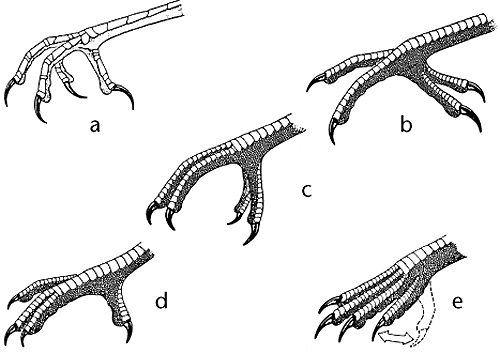| Anisodactyl: the hallux is behind and the other three toes are
in front, as in a thrush. |

|
| Syndactyl: the third and fourth toes (outer and middle) are
united for most of their length and have a broad sole in common, as in
the Belted Kingfisher |
See diagram below
|
| Zygodactyl: the toes are arranged in pairs, the second and third
toes in front, the fourth and hallux behind, as in a woodpecker. |

|
| Heterodactyl: like the zygodactyl foot except the inner toe
is reversed (digits 3 and 4 face forward, 1 and 2 face
backward); only found in trogons. |
See diagram below
|
| Pamprodactyl: all four toes are in front |
Although listed as a 'foot type' by Proctor and Lynch
(1993:72), it is doubtful that ". . . any birds predominantly or even regularly
use this toe configuration . . . " (Collins 1983:736).
|
| Raptorial: the toes are deeply cleft, with large, strong, sharply
curved nails (talons), as in hawks & owls |
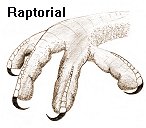
|
| Semipalmate, or half-webbed: the anterior toes are joined part
way by a small webbing, as in the Semipalmated Plover |

|
| Totipalmate, or fully webbed: all four toes are united
by ample webs, as in a cormorant. |
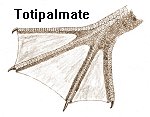
|
| Palmate, or webbed: the front toes are united as in ducks and
gulls. |
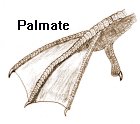
|
| Lobate, or lobed: a swimming foot with a series of lateral lobes
on the toes, as in a grebe. |
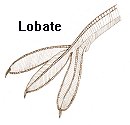
|







